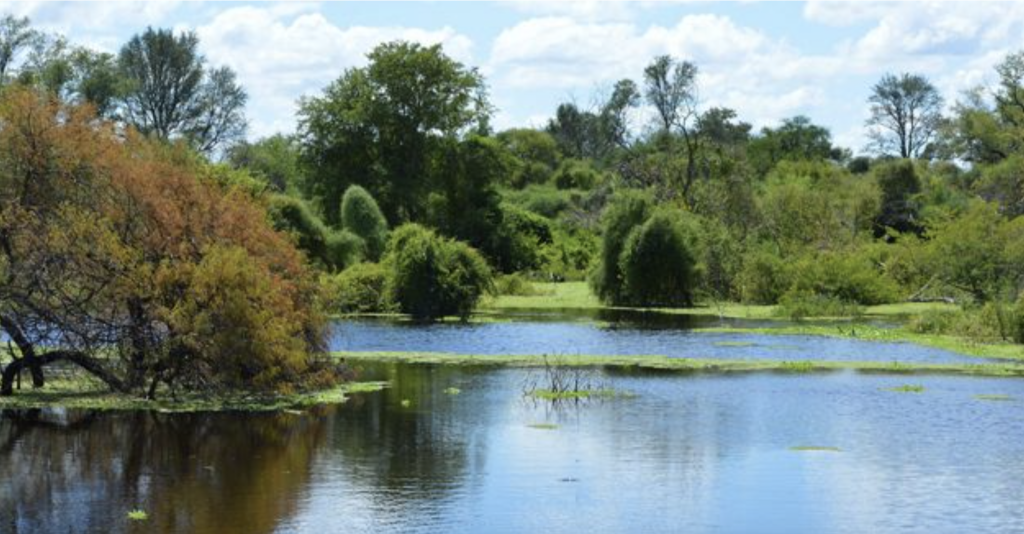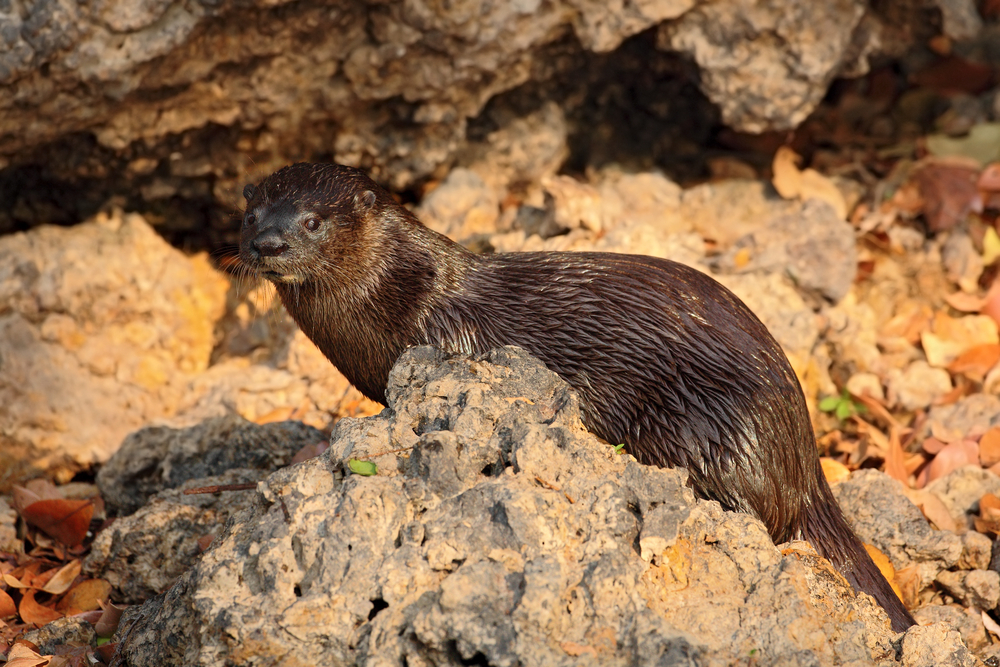Tinfunqué Overview
Tinfunqué National Park, known locally as Parque Nacional Tinfunqué, is a protected area in Paraguay that showcases the unique ecosystems of the Humid Chaco region.
Covering approximately 1,083 square miles (2,805 square kilometers), the park is situated along the Pilcomayo River in the Presidente Hayes Department. Established in 1966, Tinfunqué was designated a Ramsar Site in 1995, recognizing its importance as a wetland of international significance.
The park’s landscape is characterized by an alluvial plain that experiences seasonal flooding, resulting in a mosaic of habitats. These include patches of forest, extensive clusters of lakes, and savannas dotted with palm groves.
Watercourses meander through ancient riverbeds lined with gallery forests, while vast dry plains support grasses and shrubs. This diverse terrain provides a rich tapestry of environments that support a wide array of flora and fauna.
Tinfunqué’s vegetation is adapted to its flood-prone environment. The savannas are dominated by palm species, while the forests consist of species resilient to periodic inundation. The wetlands are home to aquatic plants, including the critically endangered Potamogeton striatus. This variety of plant life creates a complex ecosystem that sustains numerous wildlife species.
The park is a haven for wildlife, serving as a breeding ground for several threatened species. Notably, it supports populations of the Chacoan peccary (Catagonus wagneri), a species once thought extinct. Other significant mammals include the marsh deer (Blastocerus dichotomus), South American tapir (Tapirus terrestris), and the maned wolf (Chrysocyon brachyurus).
Birdlife is abundant, with species such as the green-winged teal (Amazonetta brasiliensis), whistling heron (Syrigma sibilatrix), and the wood stork (Mycteria americana) commonly observed. The park’s location along migratory routes makes it an essential stopover for numerous bird species.
Visitors to Tinfunqué can explore its diverse landscapes and observe its rich biodiversity. Activities such as birdwatching, wildlife photography, and guided nature walks offer immersive experiences in this unique environment. The park’s wetlands, forests, and savannas provide ample opportunities for nature enthusiasts to engage with the Chaco’s natural beauty.
Despite its ecological significance, Tinfunqué faces conservation challenges. The presence of private cattle ranches within its boundaries has led to conflicts between land use and conservation goals. While the park was initially designated as a national park, it was reclassified in 2016 as a Managed Resources Reserve to reflect the mixed land ownership and ongoing economic activities.
This reclassification aims to balance sustainable resource use with the preservation of biodiversity. Efforts are ongoing to involve local landowners in conservation initiatives, promoting practices that protect wildlife habitats while allowing for productive land use.
In summary, Tinfunqué National Park is a vital conservation area that embodies the ecological richness of Paraguay’s Humid Chaco. Its diverse habitats support a wide array of plant and animal species, some of which are threatened or endangered.
While challenges persist due to overlapping land uses, collaborative management approaches offer hope for the park’s future, ensuring that its natural treasures are preserved for generations to come.












































































